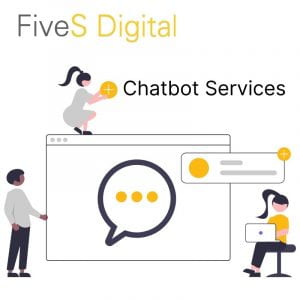Automation was a solution that companies turned to when it became difficult to meet customers’ changing needs and adapt to them. We have AI chatbot Solutions in eCommerce to help customers drive and be more customer-centric.
What does eCommerce Chatbot software do?
eCommerce Chatbot software can be used by online retailers to communicate with customers at every stage of the customer journey. ECommerce stores can use these chatbot services to answer customer questions directly from their website or other messaging platforms such as WhatsApp, Instagram Messenger, Facebook Messenger, etc.
These chatbots can talk with customers and address any concerns they may have about the product before making the purchase. This chatbot software can be used to communicate with customers and provide after-sales support instantly.

How are Chatbot solutions helpful for eCommerce websites?
Ever wonder what causes cart abandonment? Let’s find out.
Forrester reports that 53% of online shoppers abandon carts when they don’t get immediate answers to their questions.
It is not enough to offer email support. They won’t wait for a callback or put off a phone call. Customers want answers right away. You can’t fill every page with details about products and services. You can only do the best thing: deploy a chatbot Software to your eCommerce website. This will keep the ball moving. If your bot includes a live chat feature, your business will be more valuable. Your customers can now have their most complicated queries answered instantly, saving you more carts.
Chatbot solutions are a great way to increase sales and customer support in your eCommerce store:
- Personalizes your services
AI chatbot solutions for eCommerce can remember past interactions and adapt them to create personalized conversations. Bots allow customers to remain focused while navigating the sales funnel and providing product recommendations. Personalizing services can increase engagement, save time for customers, and help you promote relevant products.
- Real-time interaction records
Chatbot software that uses AI enables eCommerce businesses to interact with customers. These data can be used to analyze and improve services based on user input. Instant access to crucial data can reduce operation costs and maximize efficiency.
- Customers executives can focus on more challenging tasks
Chatbot services can answer 80% of repetitive questions from customers and can be used to help customer service representatives provide support for more complex queries. You can win more customers by prioritizing complex queries and reducing the operation cost.
- Lead generation and email marketing.
With the help of trigger emails and instant replies, AI bots can interact with users. This can be automated with inexpensive email marketing software. ECommerce businesses can use Chatbot services to persuade customers to fill out forms and collect data.
The eCommerce chatbot platform can gather lead information in many ways. It can capture data in conversation flows or allow customers to fill out forms in the bot.
Conclusion
eCommerce chatbot Platform is always eager to please its customers with an unforgettable experience. It eventually leads to average customer satisfaction with traditional tools of engagement.
A good customer experience will lead to high customer satisfaction rates.
Many eCommerce businesses struggle with improving customer experience. Chatbot Platform allows customers to communicate their emotions so that businesses can empathize and understand them.
When will you get started? To engage and assist your customers and reduce your customer service costs, FiveS Digital TODAY can provide customized Chatbot services.




